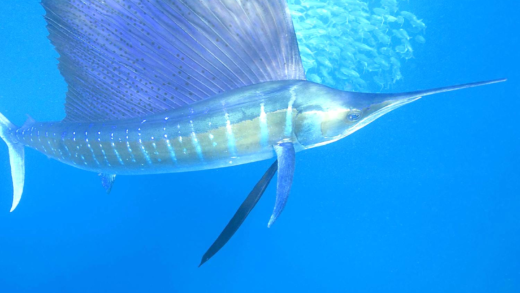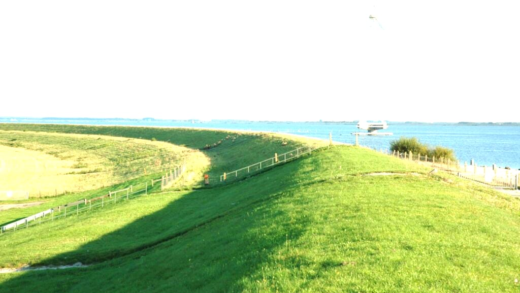The Javan rhino is critically endangered, with fewer than 80 individuals remaining, primarily in Ujung Kulon National Park. Habitat loss, poaching, and low reproductive rates threaten their survival. Conservation efforts are vital for both the Javan rhino and other endangered rhino species, including the Sumatran, white, and black rhinos.
Javan Rhino Overview: What Makes Them Unique?
The Javan rhino is a remarkable creature, standing out as one of the rarest mammals on the planet. With an estimated population of fewer than 80 individuals, this endangered species is unique due to its distinctive features and behaviors. Unlike other rhinos, the Javan rhino has a single horn, which can grow up to 25 centimeters long. This horn is not just a physical characteristic but plays a significant role in their social interactions and feeding habits.
Moreover, Javan rhinos are known for their thick, loose skin, which is covered in folds that resemble armor. This adaptation helps them survive in their natural habitat, where they often navigate through dense vegetation. Their elusive nature and preference for solitary living make them difficult to study, adding to their mystique.
Javan Rhino Habitat: Where Do They Live?
The Javan rhino primarily inhabits the Ujung Kulon National Park in Indonesia, a UNESCO World Heritage site. This national park provides a lush and diverse environment that is essential for their survival. The habitat consists of tropical rainforests, wetlands, and coastal areas that offer ample food sources, including leaves, fruits, and shrubs.
Within this protected area, the Javan rhino finds shelter and sustenance. The dense forest cover offers protection from potential threats, while the varied terrain allows them to roam freely. The park’s unique ecosystem plays a crucial role in maintaining the delicate balance required for the Javan rhino’s survival.
Factors Behind the Decline: What’s Happening to Their Population?
The population of the Javan rhino has been in decline due to several critical factors. Habitat loss is one of the primary threats, as deforestation and human encroachment reduce their living space. Agricultural expansion and infrastructure development have fragmented their habitats, making it challenging for them to find food and mates.
Additionally, poaching poses a significant risk, despite the low demand for Javan rhino horns compared to other species. The illegal wildlife trade continues to threaten their existence. Natural disasters and disease outbreaks further complicate their survival. Conservation efforts are crucial to address these challenges and protect this magnificent species.
Current Population: How Many Are Left?
The Javan rhino population is alarmingly low, with estimates indicating that fewer than 80 individuals remain in the wild. This makes the Javan rhino one of the rarest large mammals on Earth. The entire population is confined to the Ujung Kulon National Park, which is crucial for their survival.
Efforts to monitor and protect the population are ongoing, yet their numbers have not significantly increased. In fact, the isolation of these rhinos raises concerns about genetic diversity, which is vital for the species’ long-term health. The rarity of the Javan rhino serves as a stark reminder of the fragility of wildlife in the face of human encroachment and habitat destruction.
Conservation Efforts: What’s Being Done?
Conservation efforts for the Javan rhino are critical, given their precarious situation. Various organizations and the Indonesian government are working tirelessly to protect these magnificent creatures. Key initiatives include:
- Habitat Protection: Ensuring the integrity of Ujung Kulon National Park is essential. This involves preventing illegal logging and encroachment.
- Anti-Poaching Patrols: Regular patrols are conducted to deter poaching activities. Despite the low demand for Javan rhino horns, vigilance is necessary.
- Research and Monitoring: Scientists track the rhinos’ movements and health, providing valuable data to inform conservation strategies.
- Community Engagement: Local communities are educated about the importance of the Javan rhino and are encouraged to participate in conservation efforts.
These combined efforts aim to stabilize and ideally increase the Javan rhino population, ensuring they continue to roam the Earth.
Rarity of the Javan Rhino: Why Are They So Rare?
The rarity of the Javan rhino stems from a combination of historical and contemporary factors. Once widespread across Southeast Asia, their population has drastically decreased due to:
- Habitat Loss: The destruction of their natural habitat through agriculture and urban development has left them with limited space to thrive.
- Poaching Threats: Although less targeted than other rhino species, poaching remains a risk due to the illegal wildlife trade.
- Low Reproductive Rates: Javan rhinos have a slow reproduction rate, which means that population recovery is challenging.
- Natural Disasters: Being located in a region prone to earthquakes and tsunamis puts their already small population at further risk.
This unique combination of factors makes the Javan rhino exceptionally rare, highlighting the urgent need for effective conservation strategies.
Ujung Kulon National Park: A Sanctuary for Javan Rhinos
The Ujung Kulon National Park is crucial for the survival of the Javan rhino. This UNESCO World Heritage site not only provides a safe habitat but also plays a vital role in the conservation of this endangered species. The park’s diverse ecosystems, including rainforests, wetlands, and coastal areas, support the food and shelter needs of the Javan rhino.
Several key factors contribute to the importance of Ujung Kulon National Park for the Javan rhino:
- Protection from Poaching: The park’s status as a protected area reduces the risk of poaching, which is one of the primary threats to Javan rhinos.
- Habitat Conservation: Efforts to preserve the natural environment within the park ensure that Javan rhinos have access to their necessary resources.
- Research Opportunities: Ujung Kulon serves as a living laboratory for scientists studying rhino behavior, health, and ecology, helping to inform conservation strategies.
- Community Involvement: The park engages local communities in conservation efforts, promoting awareness and support for the Javan rhino’s survival.
In summary, Ujung Kulon National Park is indispensable for the Javan rhino’s future, offering protection and resources essential for their survival.
Other Endangered Rhinos: Who Else Is at Risk?
While the Javan rhino is among the rarest, other rhino species also face significant threats. The current endangered rhino species include:
- Sumatran Rhino: With fewer than 80 individuals left, this species is critically endangered due to habitat loss and poaching.
- White Rhino: Although the southern white rhino has seen population recovery, the northern white rhino is functionally extinct, with only two individuals remaining.
- Black Rhino: Once abundant, their numbers have dwindled to around 5,600 due to poaching for their horns.
Each of these species faces challenges similar to those of the Javan rhino, including habitat destruction, poaching, and low reproductive rates. Conservation efforts are essential not only for the Javan rhino but also for ensuring the survival of all endangered rhinos around the globe.





Comments are closed.